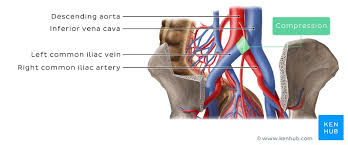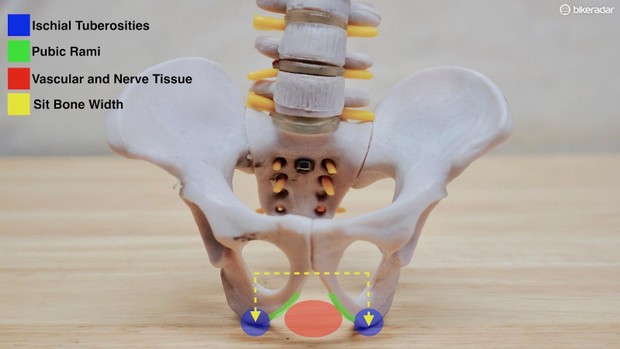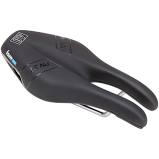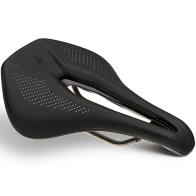Hips are an integral for cyclists and essentially need to be looked after as a joint that takes load all day, every day for most of us, particularly for triathletes reading this.
The first thing to outline in this article is the total myth of using hip flexors to pull up on the pedal upstroke. A wide range of articles have claimed that working on this upstroke power can create a more continuous effort throughout the pedal stroke and therefore lead to greater efficiency and overall power. It is now empirically proven in the literature that this is incorrect and will actually decrease efficiency and overall power significantly. (Please don’t do it!) The following studies utilised power meters and force analysis to prove that the lack of force seen on the upstroke is due to non-muscular forces, and consciously trying to pull up actually makes you more inefficient. (Martin and Brown 2009; Wadsworth and Weinrauch, 2019). The only exception to this rule would be a track start seen for initial deliverance of power in the velodrome.
Vascular Problems
One the most underdiagnosed issues with cyclists is vascular issues that result in a loss of power, pain and paraesthesia. All of which reduce the amount of cycling one can do and, in some cases, end careers. There is a stigma attached, most notably with males, in reporting this early enough to resolve the issue. Normally a simple bike fit can resolve the issue, to address saddle height and basic positioning.

Rather simply, being seated for long periods on any saddle causes compression to your arteries or veins, usually the iliac arteries and veins, lack of blood flow caused by compression and or damage of blood vessels around the saddle area (see May-Thurner Syndrome).
This usually occurs when closing the hip angle to achieve the best ‘aero’ position or if just incorrectly set up on the bike. Endofibrosis is the condition caused by mechanical trauma around the hips and is often misdiagnosed. These compressive issues are best avoided by ensuring you do not have a ‘closed hip’ position in the bike.
If you do experience pain, burning within the hip or an unexplained loss of power, please seek appropriate help immediately or contact us.
Other Saddle Issues
One of the other major issues related to hip position on the bike, is saddle injuries. The saddle is an uncomfortable and rather crazy place to spend long hours in when you think about it.
A large amount of the seated position is point loading through the ischial tuberosities (bum bones). Pressure on the muscles in this area can cause soft tissue compression to the gluteal muscles, hamstring insertions and hip rotators, as well as to the posterior femoral cutaneous nerve and the male, and female genitalia (and also, the aforementioned vasculature).
Problems will normally occur when dramatically increasing the amount of time you spend in the saddle or changing your aero position aggressively and not progressively. Furthermore riding in the wet or gritty roads can cause increased skin irritation or possibly skin breakdown and infection (good and appropriate clothing helps dramatically here).
The bike fit you undertake can also cause these issues if altering too dramatically or in fact it is just incorrect. After this the saddle can be the cause, obviously if damaged or not straight (this is more common than you would think).
A correct saddle for you, can make cycling so much more comfortable, enjoyable and will make you faster.
Saddle Width, Cutaway Saddles, split nose saddles and much, much more
Correct width in my experience is key here – the ischial tuberosities should be in contact with the saddle and absorbing most of the weight. Your musculature, nerves and blood vessels should be offloaded as much as possible.
One of the most important things to do is check that your ischial tuberosities (sitting bones) are in solid and well-maintained contact with the saddle. There are so many formulas for this, but without the use of saddle pressure mapping, the easiest way to test this is to sit onto some soft cardboard and find the indentations made with your ischial tuberosity (sit bones) and measure the distance between them. Your saddle should be about 10mm (at least) wider than this, to comfortably accommodate you.

Male and Female geometry is of course different here and is accounted for in male/female bikes. A common mistake to avoid here is females buying second hand bikes with male geometry and not fitting the saddle correctly. Please be careful and if you have any questions please email dan@complete-physio.co.uk.

Finally, the use of cutaway saddles is increasingly popular and, in my opinion, correctly so. The design of these has improved significantly in recent years. As well as reducing point load pressure on certain areas, they are actually designed to slightly move with the motion of your legs, again allowing for a larger margin of area on the saddle fit.
A cutaway saddle is a great piece of design that should be utilised by all cyclists. For triathletes and those looking for the very aggressive aero position (TT cycling) a split nose saddle can be a game changer. This saddle allows you to sit comfortably in an aggressive riding position, with your pelvis very anteriorly pelvic tilted. With the UCI abandoning their 0º saddle tilt ruling – this could give you the ability to accommodate that dream aero position!

If you would like to find out more about our Bike Fit Services at Complete Physio or to answer any specific questions please email dan@complete-physio.co.uk.
To make an appointment with Dan please call 020 7482 3875 or email info@comple-physio.co.uk.
Don’t let pain hold you back, book now!


